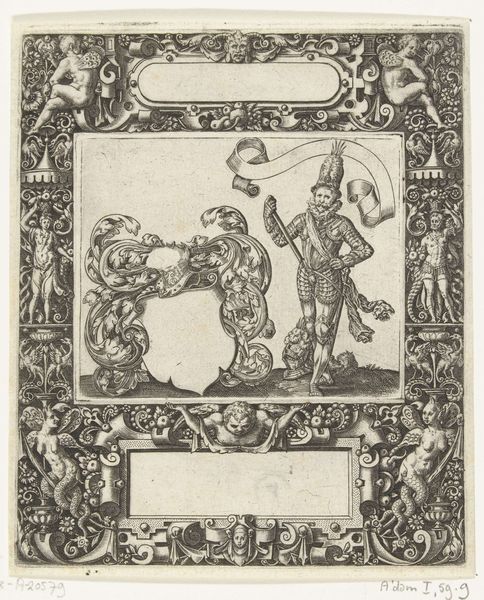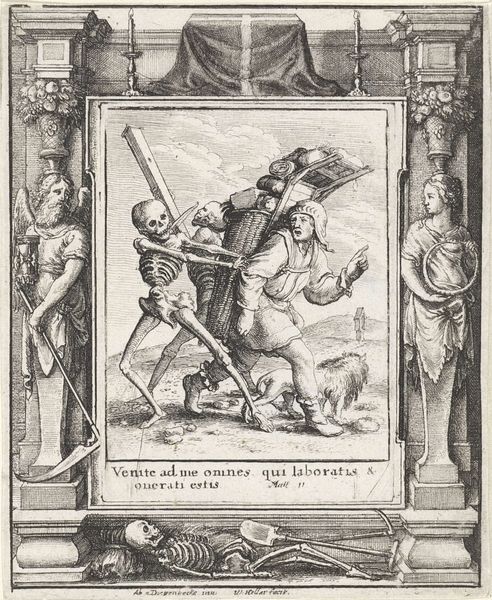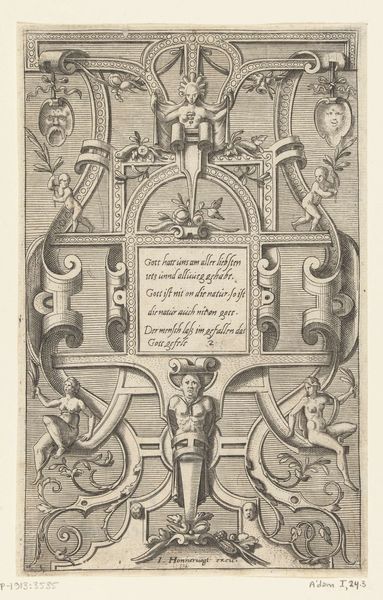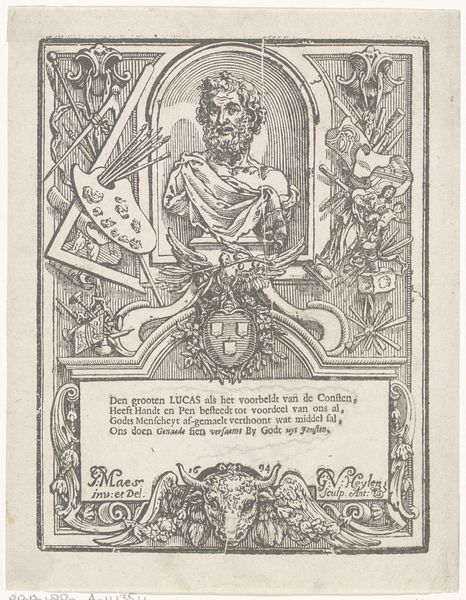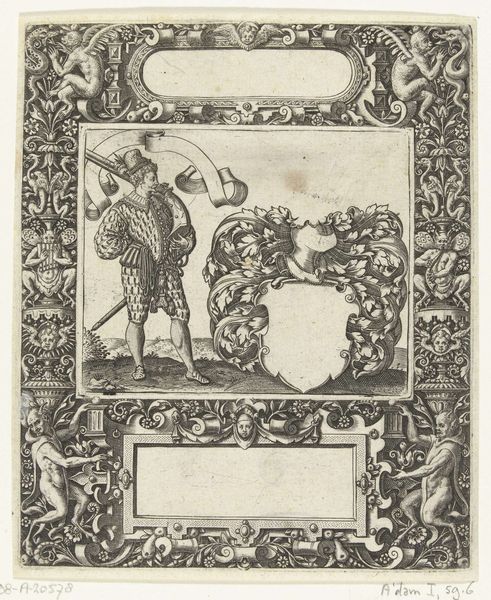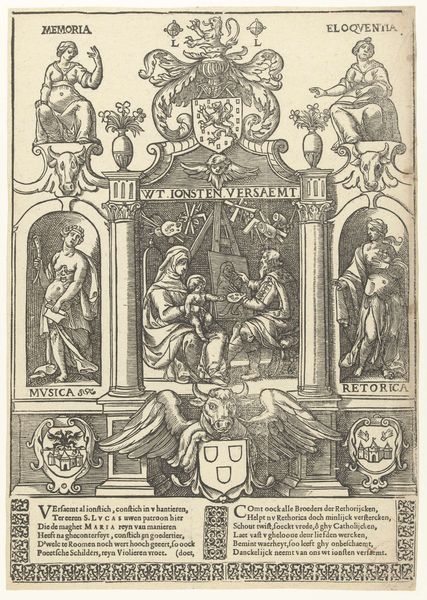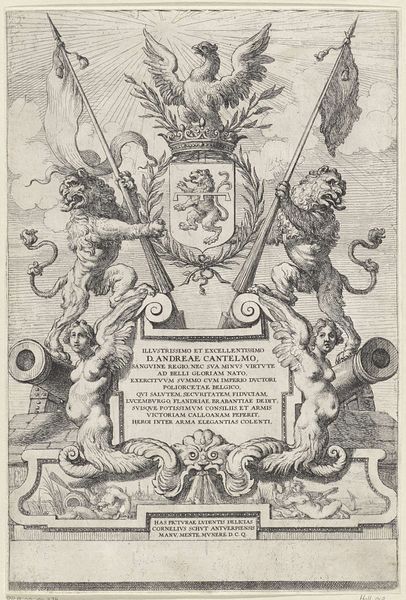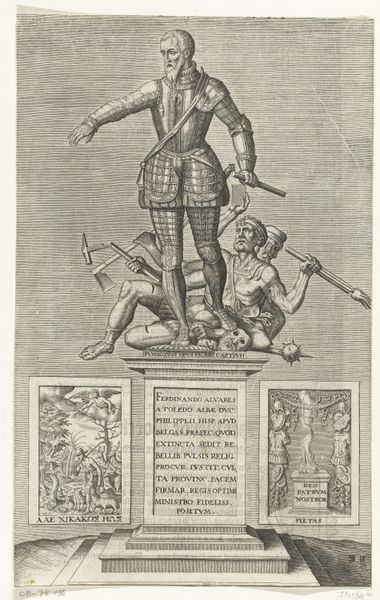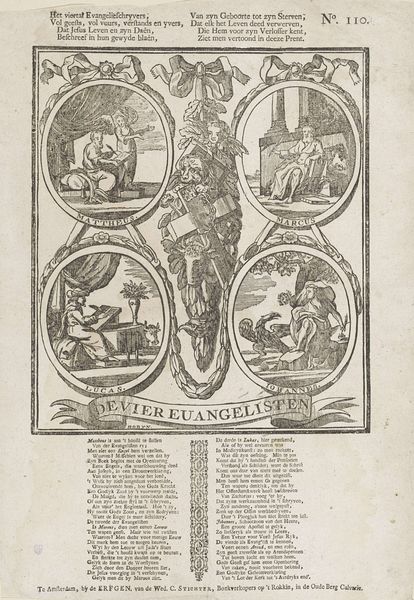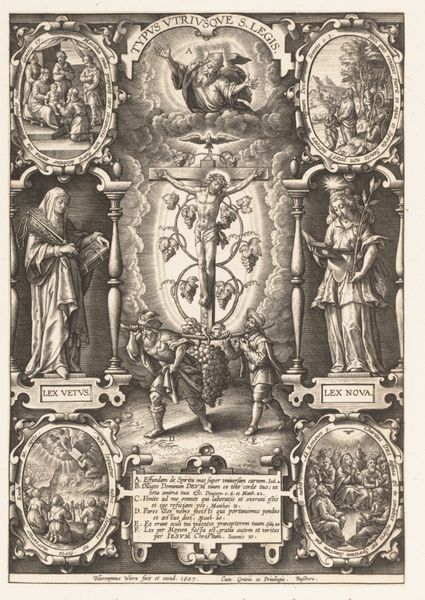
print, metal, engraving
#
portrait
#
allegory
#
baroque
#
pen drawing
# print
#
metal
#
old engraving style
#
history-painting
#
engraving
Dimensions: height 340 mm, width 250 mm
Copyright: Rijks Museum: Open Domain
Curator: Before us stands an engraving, likely a print, crafted between 1723 and 1725. The Rijksmuseum identifies the artist only as anonymous, titling it "Standbeeld van de hertog van Alva, 1571," or Statue of the Duke of Alba, 1571. Editor: The statue commands attention, of course, but what strikes me is the sheer density of ornamentation! The framing is so busy. The dark lines create this incredible depth, despite the relative flatness inherent to the engraving medium. Curator: It’s baroque overload, definitely a conscious choice. Consider Alva's persona: the so-called Iron Duke, known for his stern rule and repression. The visual language here mirrors that very heavy handedness. His figure even stands above crouching figures. Editor: Note the men under his feet—one bound, one seemingly crushed under his weight. They are powerful visual cues. And the three panels surrounding the statue’s base—they provide narrative context, right? Curator: Precisely. They represent Alva's victories and supposed virtues, like piety. Although some may dispute the presence of true piety! That's why understanding visual vocabulary unlocks how we view this. The weapons and implements bordering the piece signify power, domination, all very deliberate. The skulls also seem to symbolize doom and are featured very prominently near the bottom of the statue. Editor: It's intriguing how this piece functions as propaganda. Alva, of course, was a highly contentious figure, especially in the Netherlands. But visually speaking, there's an undeniably masterful handling of light and shadow. Look at how the engraver creates volume with just thin lines! The technique and skill employed elevate this engraving above mere historical document into the realm of compelling, if controversial, art. Curator: Indeed. This isn’t merely an image, it is a declaration. Considering it as visual rhetoric allows us to question whose interests it served and whose memory it was designed to sway. It highlights a moment in Dutch history. Editor: Absolutely, examining its components invites speculation and re-evaluation through today's lens, and appreciate both artistry and message.
Comments
No comments
Be the first to comment and join the conversation on the ultimate creative platform.
